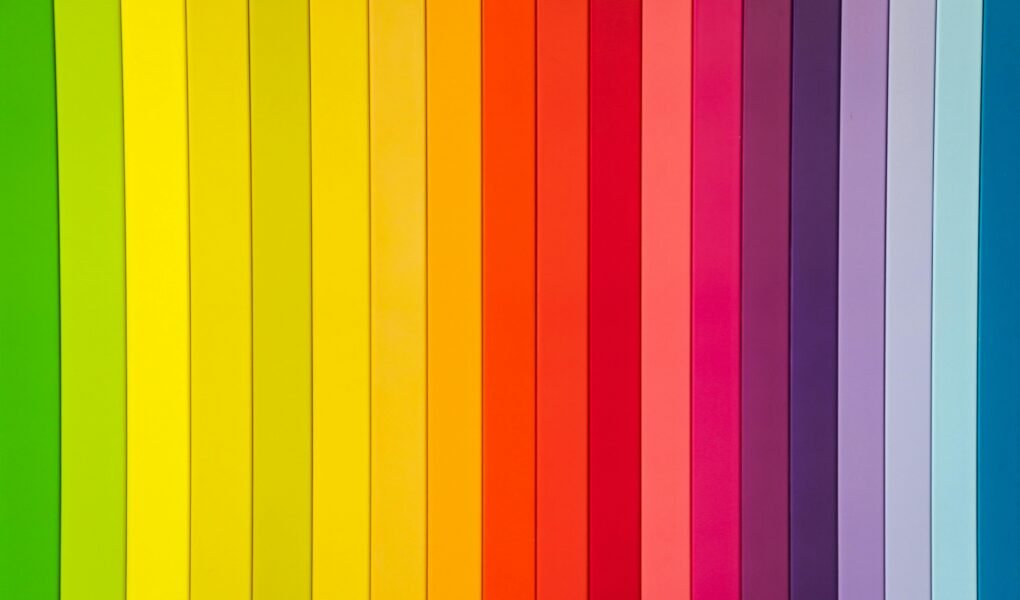Understanding when to use RGB versus CMYK color modes is crucial for designers, photographers, and content creators. Making the wrong choice can lead to unexpected color shifts, poor quality output, and costly reprints. This comprehensive guide will help you make the right decision for your specific needs.
Understanding Color Models Basics
What is RGB?
RGB (Red, Green, Blue) is an additive color model that creates colors by combining light. Each color in RGB is created by mixing different intensities of red, green, and blue light. This model is the foundation of digital color display, capable of producing millions of colors through various combinations of these three primary colors.
What is CMYK?
CMYK (Cyan, Magenta, Yellow, Key/Black) is a subtractive color model used in printing. It works by applying layers of ink that subtract brightness from white paper. Each color is printed as a pattern of dots that combine to create the full spectrum of colors we see in printed materials.
Key Differences Between RGB and CMYK
The fundamental difference between these color models lies in their approach to color creation. RGB adds light to create colors, while CMYK subtracts light through ink absorption. This difference results in distinct color gamuts and application requirements.
When to Use RGB
Digital Display Applications
RGB is the optimal choice for any content that will be viewed on screens. This includes:
– Computer monitors
– Smartphone displays
– Television screens
– Digital billboards
– LED displays
The vibrant colors and wide gamut of RGB make it perfect for digital presentation, ensuring your content looks bright and engaging on screen.
Web Design and Development
For web-based projects, RGB is the only viable option. Web browsers interpret color information in RGB values, whether defined through hex codes, RGB values, or HSL. Using RGB ensures:
– Consistent cross-browser display
– Optimal loading times
– Accurate color representation
– Better performance for animations
Digital Photography
Digital cameras capture images in RGB, making it the natural choice for:
– Raw photo editing
– Digital photo albums
– Online portfolios
– Social media sharing
– Digital archiving
Social Media Content
All social media platforms display content in RGB. When creating content for:
– Instagram posts
– Facebook advertisements
– Twitter images
– YouTube thumbnails
Always work in RGB to ensure your content appears as intended.
When to Use CMYK
Print Materials
CMYK is essential for any project that will be physically printed, including:
– Business cards
– Brochures
– Flyers
– Magazines
– Newspapers
– Books
Using CMYK for print projects ensures accurate color reproduction and professional results.
Commercial Printing
Professional printing services require CMYK files for:
– Offset printing
– Digital printing
– Large format printing
– Magazine production
– Newspaper printing
Working in CMYK from the start prevents color shift issues during production.
Packaging Design
Package designers must work in CMYK for:
– Product packaging
– Labels
– Tags
– Boxes
– Retail displays
Accurate color representation is crucial for brand consistency and regulatory compliance.
Marketing Materials
Marketing collateral should be designed in CMYK when intended for print:
– Direct mail pieces
– Point-of-sale displays
– Trade show materials
– Corporate stationery
– Promotional items
Color Conversion Considerations
RGB to CMYK Conversion
When converting from RGB to CMYK:
– Expect color shifts, especially in bright colors
– Plan for reduced vibrancy
– Watch for changes in contrast
– Consider gamut warnings in your design software
– Make adjustments to maintain design integrity
CMYK to RGB Conversion
Converting CMYK to RGB can be challenging because:
– Colors may appear oversaturated
– Black may not appear as rich
– Color relationships might change
– Some subtle variations might be lost
Common Conversion Issues
Common problems to watch for include:
– Loss of color vibrancy
– Shift in specific colors
– Changes in contrast
– Potential loss of detail
– Inconsistent blacks
Best Practices
To minimize conversion problems:
– Start in the right color mode
– Use appropriate color profiles
– Maintain separate versions for digital and print
– Test conversion results before finalizing
– Work with professional printers for guidance
Professional Workflows
Design Software Settings
Optimize your design software by:
– Setting up correct color profiles
– Using appropriate workspace settings
– Enabling color proofing
– Maintaining consistent color management policies
– Regular calibration of your monitor
Color Management Systems
Implement proper color management through:
– ICC profiles
– Calibrated monitors
– Standardized viewing conditions
– Regular system updates
– Consistent workflow processes
Industry Standards
Follow established standards for:
– Print production
– Web development
– Digital photography
– Brand consistency
– Color accuracy
Quality Control Methods
Maintain quality through:
– Regular color calibration
– Proof checking
– Test prints
– Digital proofing
– Client approval processes
Conclusion
Choosing between RGB and CMYK isn’t just about following rules—it’s about understanding your project’s final destination. For digital display, RGB is the clear choice, offering vibrant colors and optimal screen performance. For print projects, CMYK ensures accurate reproduction and professional results. Success lies in making this decision early in your workflow and maintaining color consistency throughout your project.
FAQ
1. **Can I use RGB for printing if I don’t have access to CMYK conversion?**
While possible, it’s not recommended as colors may print unpredictably and appear dull or incorrect.
2. **Why do my bright RGB colors look duller when converted to CMYK?**
CMYK has a smaller color gamut than RGB, so some bright colors cannot be reproduced exactly in print.
3. **Should I design logos in RGB or CMYK?**
It’s best to create logos in both formats: RGB for digital use and CMYK for print applications.
4. **How do I know if my monitor is displaying colors accurately?**
Regular monitor calibration using a calibration device is the only way to ensure accurate color display.
5. **What happens if I send RGB files to a commercial printer?**
Most professional printers will convert your files to CMYK, but this may result in unexpected color shifts and additional charges.


